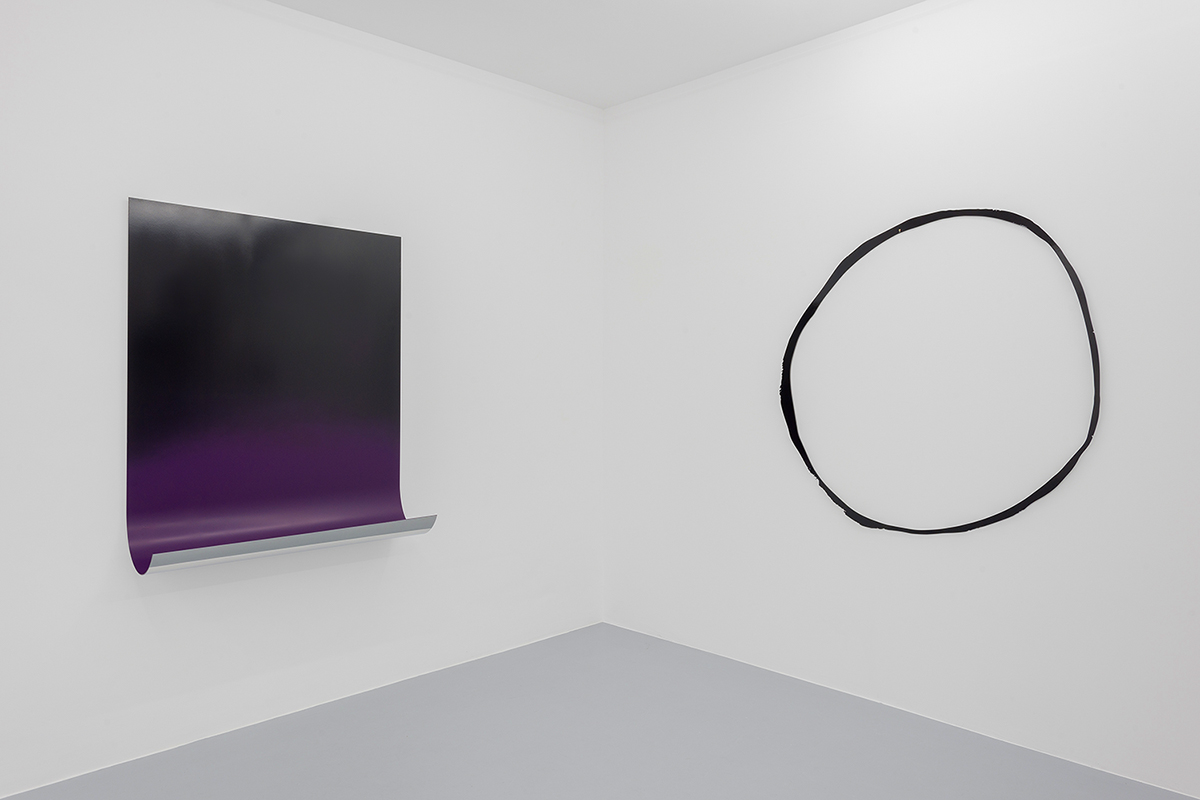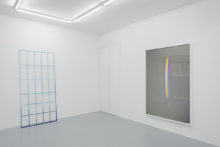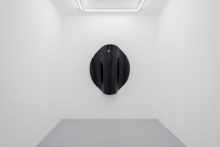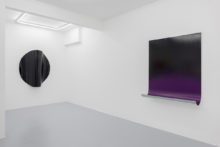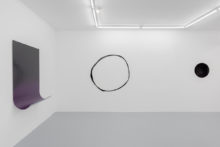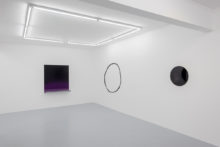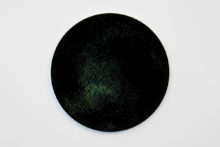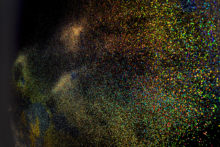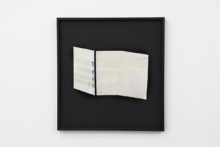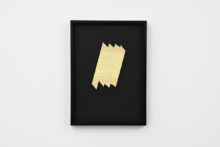Jonathan Sullam
Visual artist Jonathan Sullam (Brussels, 1979) develops a very diverse body of work, following a multifaceted logic in constant evolution. His creations are characterised by a biting analysis of the mechanisms of systemic oppression and those of the revolt that mirrors it. But the artist, who ordinarily strives to observe and dissect human aspirations by questioning the allegorical value of everyday objects and examining the rise or subversion of contemporary symbols, takes here a completely new direction. And what happens when a field anthropologist turns his gaze towards the sky?
First, before the exploration of new and faraway horizons, everything starts in an intimate, tactile, almost physical way. The shapes exhibited here are born on paper. At the beginning of his creative process, Jonathan Sullam deploys large sheets of thick paper which combine pliability and motion with a plasticity grounded in the material’s weight. This perfect primal surface is then tested in two ways. The first, illustrated in Ring of fire, is about cutting and removal – this black circle is the borderline of a full circular shape, painted on paper and then cut from the inside, at a distance from the edge. It is both what’s left behind and the original shape’s boundary that are highlighted here, as remnants of an ablation. The same is true for WTC, a geometric grid with an ascending rhythm, which only existed as a matrix for the rectangular shapes that have been removed from it. The second way of testing the surface is torsion, demonstrated in Velvet Underground or Expansion. With this graceful curvature of space, the sheet of paper seems about to roll, twist, or completely fold back on itself. These two processes create alternating spatial dialogues between fullness and emptiness, as well as presence and absence.
Then comes the transmutation of the original flexible, malleable material. The artist’s ballet of curves and cuts is put to the test of heavy industrial techniques and cold metal, which threatens to freeze the shapes into crushing immobility. However, beyond the change in density and material, an impression of lightness, a luminous vibration continues to emanate from these structures. Indeed, despite their inherent sculptural value, they are also frames created to hold radiant and atmospheric paintings. Jonathan Sullam transforms his curves, circles and grids into celestial landscapes – nightfall, northern lights or starry sky. The flat colors and abstract shapes, seemingly disembodied, draw an avowed inspiration from the Supports/Surfaces group’s experimentations, while also diverging from them in a significant way. One of their main points was to advocate for a surface free of any external referent, message or emotion, which « prevents mental projections or dreamlike ramblings from the spectator » (La peinture en question, 1969). On the contrary, Jonathan Sullam’s works, beyond their fascination with the medium and its transformations, exude a sober but almost lyrical atmosphere.
The surface, uniform at first glance, reveals an unexpected stratigraphic dimension. Indeed, whether they are painted in an intense black or a colorful gradient, the pictorial depth of these structures comes from a meticulous process of superposition. Numerous layers of primer, paint and varnish are applied, interspersed with long periods of drying and the repeated polishing of the planes thus obtained. This technique gives a temporal dimension to the work, as well as a physical depth reminiscent of the thin layers of glazes used by the Flemish Primitives to bring light directly within their paintings. Thanks to those varnishes, the work transcends its own surface, allowing the gaze to sink into it, while also creating a feeling of expansion towards the outside. Under the combined effect of the curved shapes and the gleaming surfaces, the reflections come to life; luminous columns seem to emanate from the structure, deforming the surrounding space and extending the work beyond its physical boundaries. The same alchemy operates at the heart of the photography Delight and Glory, in which the color spectrum seems to flare. The ephemeral result of a divided ray of light, captured and flattened, but which nevertheless offers the perfect illusion of shimmering rainbow.
There is life, then, under those smooth surfaces. Something unfathomable is lurking there, enticing our eye and tickling our curiosity – shining astral bodies, universes closing on themselves, distant worlds contained in an imperfect circle… The pulsation and rhythm are omnipresent. And, beyond cosmic evocations, humanity reaffirms itself as a primary referent. This precedence of that relationship is established by the dimension of the works, which are instinctively drawing the bodies towards them and inviting comparisons. The curves and the light spectrum vibrate, blurring the boundaries between the object and its environment, but also those between the shape and the human being who confronts it. The body, used as a baseline measurement, as a field of experience and as a means of apprehending the work, allows itself to be drawn into the dual shift generated by the artwork – an immersion into the matter and a constant expansion through the universe.
Listen to the artist talk about “Thousands of light years from here” on musiq3 (rtbf) with Pascal Goffaux by following this link
Read more about Jonathan Sullam
